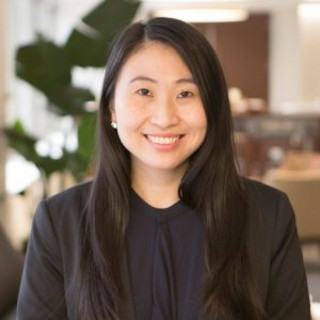
In the month of September, women in medicine were in the spotlight. Although 2017 marked the first year that the number of women matriculating into medical schools exceeded the number of men and the publication of a study associating improved outcomes when patients are cared for by women physicians, there still exists a huge gender discrepancy between how male and female physicians are promoted and paid. There are numerous theories about why the discrepancy still exists: deep-rooted biases, volunteerism for non-promotable tasks, limited sponsorship, and managing work-life challenges after childbearing. Many have suggested ways to promote gender equity within the field, but there is still a lot of work that needs to be done in order to see real change.
Women are also under-represented in engineering
As an undergraduate in an engineering degree program, I sought out opportunities to understand the gender gap and contribute to closing it. Approximately 20% of engineering degrees are granted to women, however women only represent 13% of the engineering workforce. This led me to wonder, why so few women sought a career in engineering and for those that decided to pursue a degree in engineering, what led them astray after graduation? I joined the Society of Women Engineers (SWE) as a sophomore and participated in frank discussions with my colleagues about the challenges women in engineering face. Similar to women in medicine, women in engineering experience challenges from an early stage. As a personal example, none of my professors or graduate student instructors were women. There were no high-level role models within my institution to provide mentorship or support. During my master's degree, I started an after-school engineering club at an underserved middle school. I went to each of the classes to promote the club and recruit students to join; despite being a woman myself, I still ended up with more boys than girls. The girls that did join would ask me whether I thought they could be successful in a field like engineering; a question that none of the boys ever asked.
Through SWE, I attended panels where women alumni returned to discuss the challenges they faced in their careers. I participated in workshops to improve my resume, learned body language that was confident, but non-threatening, and received frequent reminders that as a woman, I would inevitably face challenges in work-life balance. When I matriculated into medical school, I sought out a parallel organization to SWE; since I was part of the inaugural class of a new medical school, I founded our American Medical Women's Association (AMWA) branch.
Women in medicine organizations are still relevant
One of the first questions I received as I sought to establish our AMWA branch was whether an organization that focused on women in medicine was still relevant. I furrowed my brows at this question, but also recognized that the equal gender ratio at most medical schools paints a picture of equality. The challenges that women in medicine face often become apparent during clinical rotations, continue into postgraduate training and linger throughout a woman physician's career.
Currently, as a resident in anesthesiology, whenever I have a male medical student with me, many of my patients will first ask the medical student if he will be their doctor. Despite introducing as "Doctor Amanda Xi," many of my patients still assume I am a non-physician care team member. When I gently remind them of my role as a physician, the statement is often met with surprise. While I am not offended by the assumption, it is a constant reminder of the prevalence of gender biases that still remain.
Through AMWA, I have connected with prominent women physician leaders across the country and learned from their journeys. I have been granted leadership opportunities and awarded for my contributions to the organization. The value of the community of female voices is apparent through the popularity of specialty-specific women in medicine organizations (e.g. Association of Women Surgeons, Women in Anesthesiology, Fem in EM, etc) and online social media communities such as Girl Med Media on Twitter or the Physician Moms Group on Facebook. Although the increasing prominence of the issues facing women in medicine is promising, only when we unify as a community of voices advocating for change, will we be effective.
A call to action
Everyone can contribute to fostering a culture that's inclusive and equal. If you're not a woman, first, take the time to recognize ways that you may be contributing to gender inequality. Then consider the impact of how you write your letters of recommendation, how you can shape the workplace environment, and how you can sponsor aspiring women leaders. If you're a woman in medicine, make sure that you join organizations that advocate for culture change, contribute your voice, and find sponsorship from those that have worked to pave the path for our advancement.
Amanda Xi, MD, MSE is currently a resident at Massachusetts General Hospital (MGH) in Boston, MA and upon graduation will be continuing at MGH as a critical care fellow. She is an active blogger at her self-titled website and also active on Twitter (@amandasxi), Facebook, Instagram (@amandaeleven), LinkedIn, and Doximity. She is also a 2018–2019 Doximity Author.







